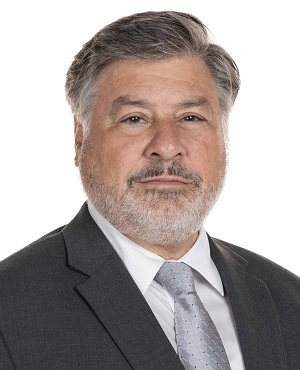Leadership Life Lessons by a 40-year Banker

Global Management Consulting firm McKinsey & Company defines leadership this way: Leadership is a set of behaviors used to help people align their collective direction, to execute strategic plans and to continually renew an organization.
Stated another way, leadership simply boils down to providing direction and motivation within a collaborative framework (Leaders + Followers) to maximize the effectiveness and achievement of organizational goals.
So, will you permit me to share some thoughts with you on what it takes to be a successful role model and leader based on my experience over the past four decades? (Not all those four decades were in leadership roles, mind you, but learning as a follower can help prepare one to step into a leadership role down the road.)
First and foremost, I think “knowing your why” and being able to articulate it is foundational in leadership. In the book Start with Why by Simon Sinek, the author challenges the reader to really understand our “why,” which he defines as the thing that inspires us and inspires those around us. A companion thought from Sinek cuts to the chase, “There are only two ways to influence human behavior: you can manipulate it, or you can inspire it.” Organizations and companies that are successful over a long period of time know their “why,” and they get the maximum out of their employees through inspiration. That in turn helps them avoid commoditization, a path that leads to competing largely based on price.
Community bank leaders also need to be innovative and willing to challenge the status quo. Banking is a mature industry, and it seems to continue to get harder to differentiate yourself in a crowded field where product offerings often look very much the same.
In my view, the successful community bank leader is also a life-long learner who doesn’t see themselves as “the smartest guy in the room.”
Additionally, servant leadership has been found to improve team morale, communication, decision-making skills and overall performance. The phrase “servant leadership” was coined by Robert Greenleaf in 1970 and describes the concept of serving the needs of others within the organization and helping them to develop and grow. I think servant leadership traits (e.g., listening, empathy, healing, self-awareness, persuasion, conceptualization, foresight, stewardship, commitment to growth and building community) are all very important in this time of the Great Resignation, when workforce turnover from Boomers to Millennials and Gen X-ers calls for a more versatile coaching leadership style to replace the old hierarchical tradition.
Let’s conclude with some advice I’d give a younger me. Over my career in finance, one thing I would share with my younger self would be to avoid burning bridges at all costs. The old saying “what goes around, comes around” has a great deal of merit. You never know when you might need to cross a bridge a second time, and if you burn it, you are definitely limiting your options. For example, early in my career I felt disrespected and passed over, convinced that I had been treated unfairly. I was fortunate that I did not follow my emotions and quit abruptly (perhaps without giving notice) or cause a major scene, because later, after exiting the organization, I ended up working with some of those same folks again elsewhere, and it would have been very difficult if I had exited on bad terms.
A quote attributed to Fredrick B. Wilcox, “Progress always involves risk; you can’t steal second base with your foot on first,” resonates with me as does a quote from Ulysses S. Grant, “In every battle there comes a time when both sides consider themselves beaten; then, he who continues the attack wins.” If I’m going to make a mistake, I would rather make it when I am on the offensive rather than in a position of retreat.
Another word of advice to a younger me might be to embrace failures or miscues as a learning exercise and persevere. We’ve all heard about the failures and setbacks of one of our most admired presidents, Abraham Lincoln, yet despite all the heartbreak and losses between 1832 and 1858, he managed to stay the course and ultimately reach the White House, elected president of the United States in 1860. Almost universally, Lincoln goes down in the annals of history as one of the nation’s greatest leaders and presidents.
Also…invest time and treasure in professional and personal development (public speaking, controlling emotions, dress for success, etc.).
Finally, choosing to approach each day with a spirit of gratitude cannot be overestimated. Adopting a “I get to” mentality and avoiding a “I have to” mentality requires some self-discipline and a conscious decision. I haven’t perfected this yet, but I continue to be a daily work-in-progress!
This Month's Guest Writer
Jamie R. Shinabarger
IBA Chairman
President, CEO and Director
Springs Valley Bank & Trust Company, Jasper